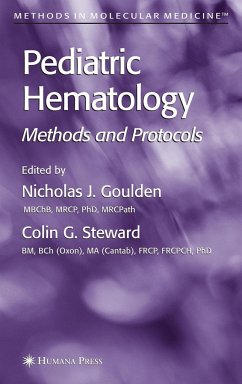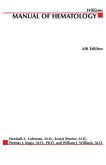Much of the progress in the diagnosis, classification, and treatment of childhood hematological disorders has come from a partnership between clinicians and scientists. Indeed, access to molecular techniques is now an integral part of the practice of modern pediatric hematology. The aim of Pediatric Hematology: Methods and Protocols is to provide a collection of scientific protocols that cover the major aspects of the discipline. Most clinicians will be familiar with the difficulties inherent in establishing the underlying diagnosis in genetic marrow failure syndromes. A particular concern is failure to diagnose those associated with DNA repair defects. In Chapter 1, Dokal and colleagues present simple protocols for the molecular investigation of Fanconi anemia and dyskeratosis congenita. Molecular diagnosis is also important in children with congenital pure red cell aplasia, owing to the highly variable phenotype of this condition. In Chapter 2, Ball describes relevant protocolsfor the investigation of Diamond-Blackfan anemia. Hereditary hemoglobinopathy is a major cause of death and morbidity throughout the world. This area has seen great advances in screening and antenatal diagnosis. In Chapter 3, Old details protocols for the molecular diagnosis of most forms of hemoglobinopathy. High-quality, accurate molecular testing on small amounts of material has been fundamental to progress in antenatal diagnostics. The introduction to his comprehensive chapter includes a discussion of the general principles that underpin these studies. In contrast to hemoglobinopathy, severe hemophilia is uncommon.
Hinweis: Dieser Artikel kann nur an eine deutsche Lieferadresse ausgeliefert werden.
Hinweis: Dieser Artikel kann nur an eine deutsche Lieferadresse ausgeliefert werden.
"Pediatric Hematology, Methods and Protocols, is an excellent reference book for physicians and scientists who serve pediatric patients in the specialty of hematology. This book is a valuable technical manual for laboratory scientists to set up new diagnostic tests and to troubleshoot and improve their current diagnostic methods. It is also a very practical guideline for physicians to choose relevant tests to arrive at correct diagnoses in light of clinical history and symptoms. The book is well organized, concisely written, and easy to understand. To the best of my knowledge, no other book describes the molecular diagnostic methods of pediatric hematologic disorders in such detail. I highly recommend this book for laboratories of hematology and molecular diagnosis in hospitals serving pediatric patients." -Society for Pediatric Pathology
"The information in this book is clearly expressed...a useful and practical text for laboratory scientists..." - Journal of Pediatrics and Child Health
"The information in this book is clearly expressed...a useful and practical text for laboratory scientists..." - Journal of Pediatrics and Child Health








